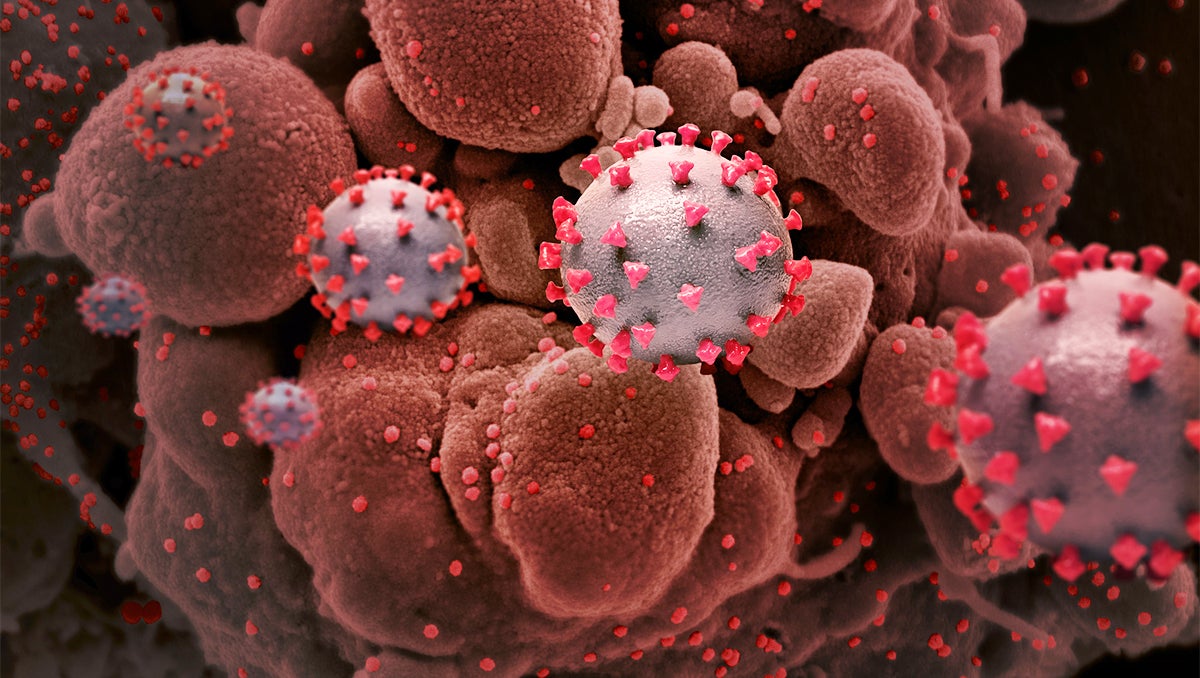Georgetown Applying Patented Technology to Develop Fast and Accurate COVID-19 Test

Posted in GUMC Stories | Tagged 2019 Novel Coronavirus, biomedical research, COVID-19, COVID-19 testing, SARS-CoV-2
(August 6, 2020) — After studying the results of a myriad of diagnostic tests used around the world for the virus SARS-CoV-2, which causes COVID-19, Georgetown University Medical Center biochemist Mark Danielsen, PhD, thinks he has a solution for making a better test — one that can deliver faster results and be accurate.
It’s a hypothesis that comes with strong evidence and years of experience; he and his colleagues have already developed tests for both viral and bacterial infections that have not produced significant levels of false negatives or positives, suggesting those tests were extremely accurate.
“The push is on to optimize a prototype Georgetown SARS-CoV-2 test and show that it works as it must for the health and benefit of all who are tested with it,” says Danielsen. He is pursing that with technology he developed and patented with Georgetown.
Described by researchers as a “diamond in the rough,” the patented technology invented by Danielsen and former Georgetown colleagues uses a highly specialized algorithm to design probes that can recognize DNA or RNA in pathogens. It has been shown to detect and discriminate between the subtypes of the RNA-containing Dengue virus, as well as between virulent and nonvirulent strains of anthrax, a bacterial disease. (The U.S. Department of Defense contracted with Georgetown to develop the anthrax test and also validated it.) The Georgetown team has also developed a test for the bacteria that causes chlamydia, the world’s most common sexually transmitted disease.
“Based on our previous experience with RNA viruses, the initial design and development of a SARS-CoV-2 test will be quick,” Danielsen says. Initially the new test will be designed to use standard laboratory instrumentation, but a stand-alone instrument can also be developed for point-of-care use for high throughput laboratories, he says.
The downside of existing SARS-CoV-2 tests is that their accuracy and predictive value have not been reported clearly or consistently to date, Danielsen says. Studies of one detection system, for instance, found 9% to 50% people with the disease tested negative. These individuals may then have had a false sense of security that could have led them to spread the virus unwittingly, and they may not have received treatment for an ongoing infection.
Another issue with current tests is specificity — the ability of a test to distinguish between related pathogens. Because a test with low specificity may not be able to distinguish between the SARS-CoV-2 virus and an unrelated coronavirus, it can yield a higher number of false positives.
“What we need today is quick, accurate identification of all individuals infected with SARS-CoV-2,” Danielsen says. “A highly sensitive test should capture all true positive results. A highly specific test should rule out all true negative results.”
Danielsen’s proposed test does not use reverse transcriptase-polymerase chain reaction (RT-PCR). Rather, it amplifies a specific region of the COVID-19 genome isothermally. The amplified region is then detected using a patented technique that increases both sensitivity and specificity.
An added bonus of this test design is that it can include probes that test for other RNA and DNA viruses as well as bacteria at the same time. “The design we have tested to date is as rapid or faster than other methods and can also be automated and used to test for multiple types of organisms simultaneously, such as SARS, MERS and SARS-CoV-2, so that a multiplex system can be designed,” Danielsen says.
The new SARS-CoV-2 test is part of a range of technologies GUMC is developing to address the COVID-19 pandemic. Read more here. Consider supporting Mark Danielsen’s work with a donation here.
Renee Twombly
GUMC Communications
